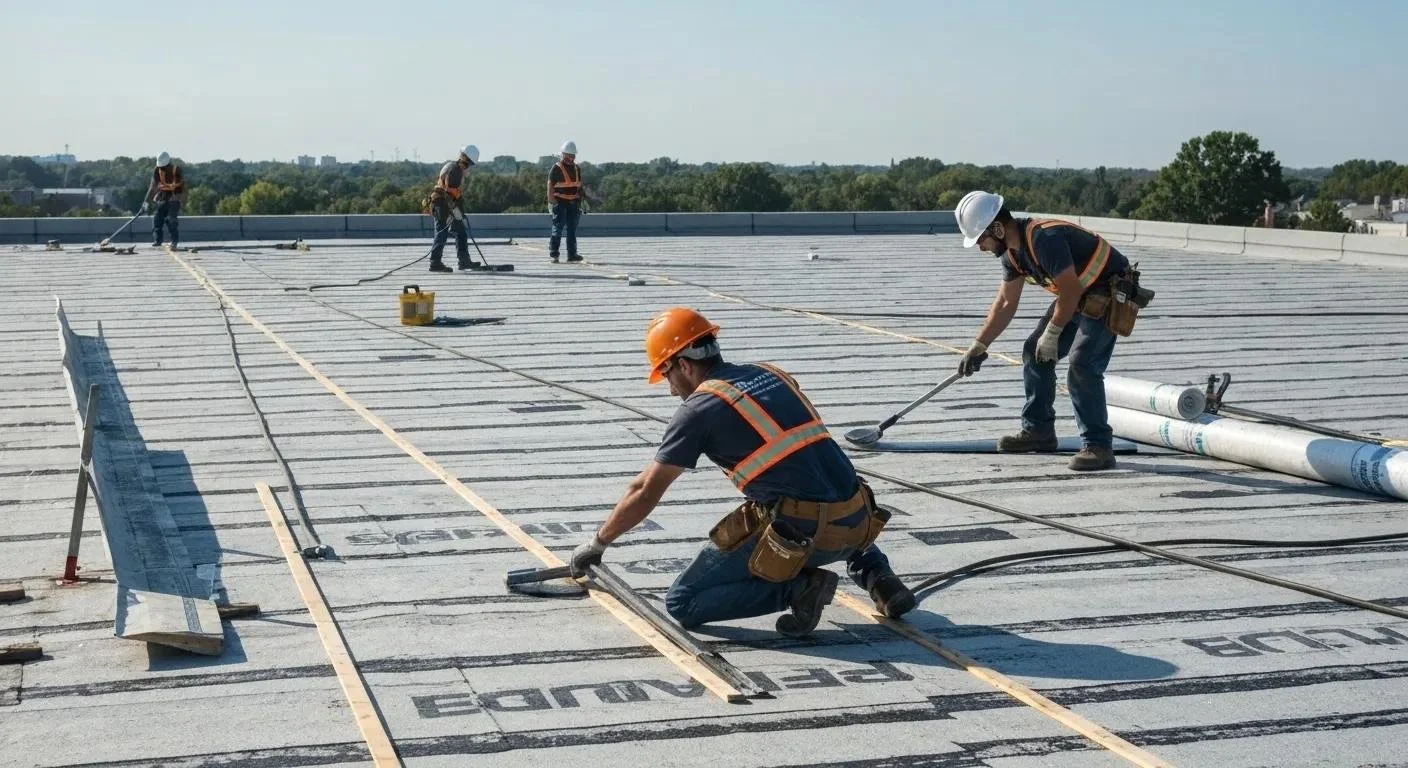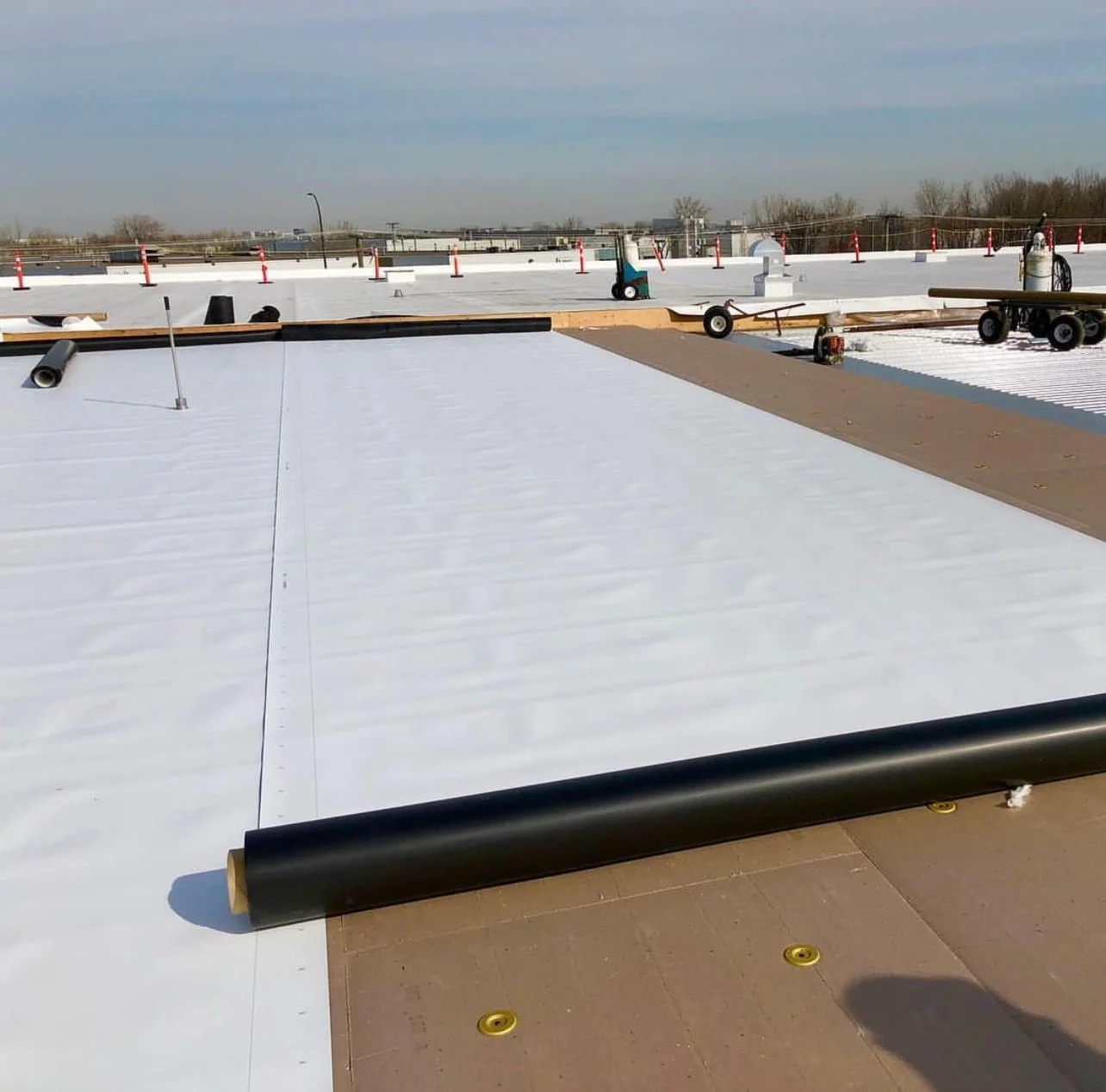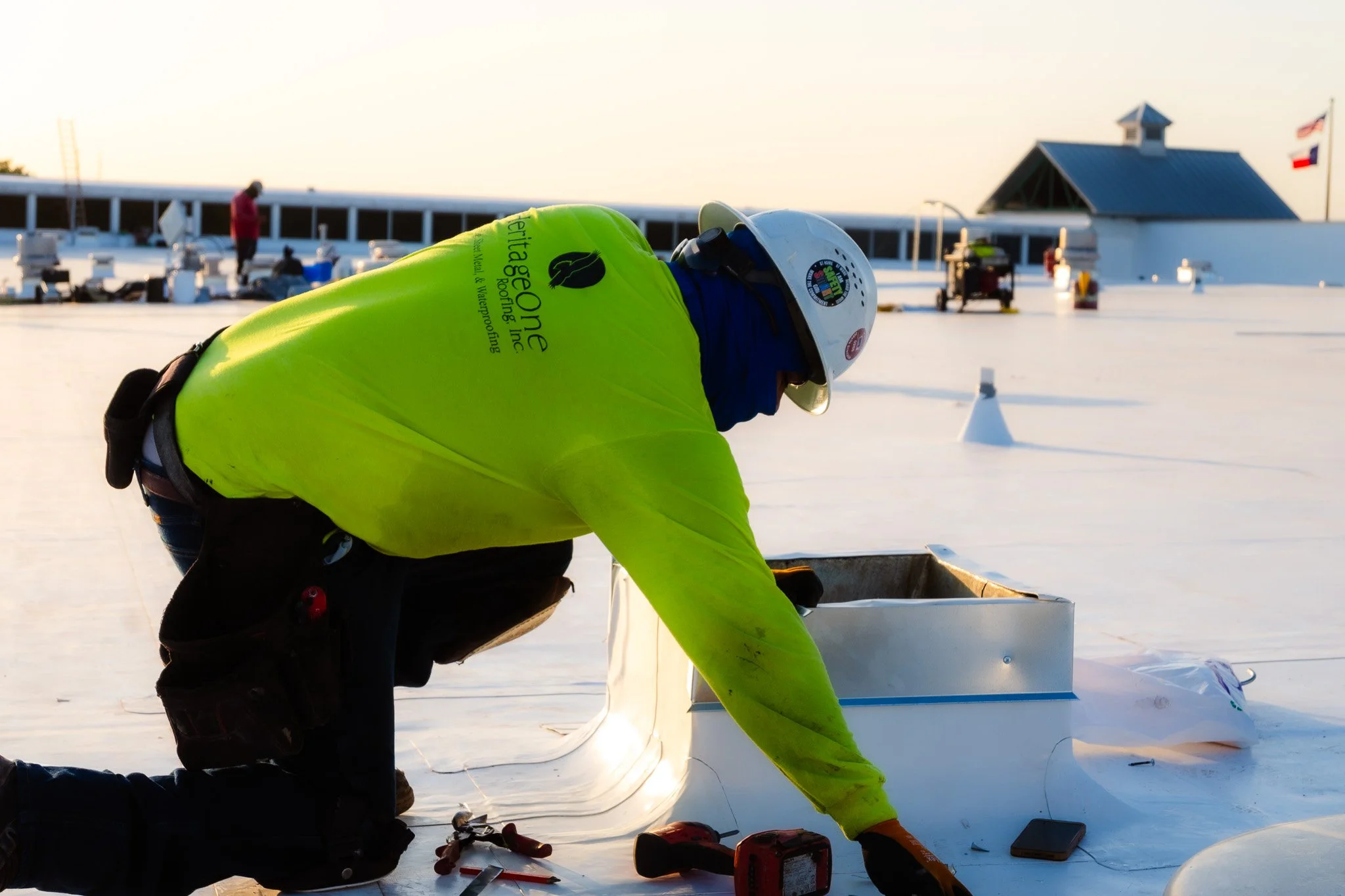Comprehensive Guide to Flat Roofs: Materials, Installation, Maintenance, and Repair
Flat roofs provide a cost-effective solution for low-slope buildings, yet they often face challenges like water infiltration and thermal loss that compromise longevity. Learn proven strategies to select durable flat roofing materials, execute a watertight installation, and maintain peak performance with preventive care. You will explore core roof membrane types, step-by-step installation processes, routine upkeep tasks, common repair techniques, drainage best practices, energy-saving options, and realistic cost. Each section builds on the last to form a roadmap for managing a flat roof from specification through replacement, ensuring your investment remains secure and efficient. You can read this article 50x over, but unless you have someone experienced on your team to go through each process, there will be issues.
What Are the Different Types of Flat Roofing Materials?
Flat roofing materials are engineered to create a continuous waterproof barrier that resists weathering, UV exposure, and foot traffic while enabling thermal protection and mechanical strength. Choosing the right membrane depends on factors such as building use, climate, budget, and desired lifespan.
For a comprehensive overview of flat roofing materials and their benefits, please visit ckmaterialsllc.com/ib-roof-systems-overview.
Thermoplastic single-ply membranes (TPO, PVC, EPDM)
Multi-layer asphalt assemblies (Modified Bitumen, BUR)
Metal panels with standing seams
Vegetative (“green”) systems with soil and plant layers
Liquid-applied coatings for reinforcement and seamless coverage
Selecting an appropriate membrane sets the stage for correct installation methods and maintenance routines that follow.
What Is TPO Roofing and What Are Its Benefits?
Image: Alter Phase Roofing
Thermoplastic Polyolefin (TPO) membranes form a single-ply barrier that welds at seams and reflects UV radiation to improve thermal performance and reduce energy costs. TPO roofing resists chemical exposure, tears, and microbial growth, making it ideal for commercial and residential flat roofs seeking both durability and energy efficiency.
TPO Roofing Benefits
Thermoplastic Polyolefin (TPO) membranes are favored for their ability to reflect UV radiation, which improves thermal performance and reduces energy costs. TPO's resistance to chemicals, tears, and microbial growth makes it a durable choice for both commercial and residential flat roofs.
U.S. Department of Energy, "Energy Efficiency and Renewable Energy"
This supports the article's claims about the benefits of TPO roofing materials.
Additional details:
Seam welding creates monolithic joints for superior leak prevention.
White or light-colored TPO reflects up to 80% of solar radiation.
Flexible formulations accommodate building movement and thermal cycling.
TPO’s combination of weldability and reflectivity translates to lower cooling loads and reduced maintenance, guiding decisions on insulation and drainage integration.
How Does EPDM Rubber Roofing Compare in Durability and Use?
Ethylene Propylene Diene Monomer (EPDM) is a synthetic rubber membrane valued for its elasticity and UV stability that extends membrane life and minimizes crack formation. EPDM’s heat-resistant nature and proven track record deliver up to 30 years of reliable waterproofing in varied climates.
Key characteristics:
Black EPDM absorbs heat, boosting freeze-thaw resilience.
Seam adhesion relies on specialized tapes or liquid adhesives.
Impact resistance withstands foot traffic and hail events.
EPDM’s robust rubber formula supports straightforward repairs and retrofit overlays, offering versatility when paired with coatings or insulation upgrades.
What Are the Characteristics of PVC Single-Ply Roofing?
Polyvinyl Chloride (PVC) membranes leverage plasticizer technology to create a chemically resistant and heat-weldable barrier that excels in industrial settings and chemical-exposed environments. PVC’s seamless welding capability and inherent fire resistance give it a strong performance profile for long-term service.
Typical attributes:
PVC resists oils, fats, and solvents found in commercial kitchens and manufacturing.
Welded seams ensure continuous waterproofing under mechanical stress.
Formulations include UV stabilizers to maintain flexibility.
PVC’s chemical resilience and seam strength make it a top choice for facilities demanding low-maintenance, high-performance roofing.
How Does Modified Bitumen Roofing Work and When Is It Used?
Modified bitumen membranes combine asphalt with polymer modifiers, delivering a multi-layer sheet system that bonds via torch-applied or self-adhered methods. This layered asphaltic approach adds redundancy and thermal stability, offering reliable waterproofing on buildings where foot traffic is moderate.
Modified Bitumen applications:
Torch-down sheets form a heat-welded membrane for seamless integrity.
Self-adhered rolls use pressure-sensitive adhesives for easy installation.
Cap sheets incorporate mineral granules for abrasion resistance.
The torch-applied technique creates molecular cohesion between sheets, resulting in a robust assembly ideal for retrofits and low-maintenance applications.
How Is a Flat Roof Installed? Step-by-Step Installation Process
A proper installation creates a continuous waterproof membrane that integrates insulation, vapor barriers, and drainage devices to prevent leaks and ponding water.
What Are the Key Preparation Steps Before Installation?
Adequate substrate preparation involves inspecting deck integrity, installing continuous insulation, and laying a vapor barrier to manage condensation. Ensuring the substrate is smooth and level establishes a stable foundation for membrane adhesion.
Preparation sequence:
Deck Inspection: Verify structural soundness and repair any deteriorated sections.
Insulation Placement: Install rigid insulation boards with staggered joints to enhance R-value continuity.
Vapor Barrier Application: Adopt low-permeance membranes to control moisture migration from below.
Surface Cleaning: Remove dust, debris, and oil to facilitate complete membrane bonding.
Solid substrate readiness paves the way for accurate membrane placement and seam integrity.
How Are Different Membranes Applied and Seamed?
Installing single-ply membranes requires precise alignment, secure fixing, and seam welding or adhesive bonding to achieve a leak-proof sheet. Mastery of heat-welding parameters and adhesive types is critical for creating monolithic assemblies.
Accurate seam formation builds a continuous barrier, ready to integrate flashing and drains for complete waterproofing.
What Role Do Flashing and Drainage Systems Play in Installation?
Flashing and drainage components direct water away from vulnerable interfaces, preventing leaks at parapets, penetrations, and edges. Properly installed flashings with flexible termination bars and integrated drain assemblies ensure swift water removal.
Essential items:
Base Flashing: Bonds membrane vertically at walls with termination bars.
Counter-Flashings: Protect seams where roof meets parapet caps.
Scuppers and Gutters: Channel overflow from roof deck to downspouts.
Internal Drains: Connect to roof sump areas for concealed water disposal.
Well-executed details guarantee that the waterproof membrane seamlessly transitions into drainage infrastructure, safeguarding the roof assembly.
How Do You Maintain and Extend the Lifespan of a Flat Roof?
Image: Heritage One Roofing
Routine care prevents small issues from escalating into costly failures and supports energy efficiency goals through timely coatings and insulation upkeep. A structured maintenance regimen can add years to system life and protect building interiors.
What Are Essential Flat Roof Maintenance Tasks and Schedules?
Proactive maintenance includes seasonal inspections, debris removal, membrane cleaning, and minor repairs to preserve integrity before major damage occurs. Regular examination of all system components catches potential failures early.
Maintenance checklist:
Quarterly Inspections: Examine membrane seams, flashings, and drains for signs of wear.
Debris Clearance: Remove leaves, branches, and sediment to prevent clogs and abrasion.
Surface Cleaning: Use mild detergents to eliminate dirt and microbial growth.
Minor Patch Repairs: Address seam splits or punctures with compatible sealants.
Consistent upkeep enhances waterproofing and supports energy-saving properties, setting the stage for advanced coating applications.
How Can Flat Roof Coatings Improve Durability and Waterproofing?
Elastomeric and silicone coatings form a seamless, UV-resistant layer that protects the underlying membrane, seals minor imperfections, and extends service life by resisting weathering and ponded water damage. Coatings also boost reflectivity for energy savings.
Coating benefits:
Seamless Barrier: Fills surface cracks and irregularities without adding seams.
UV Protection: Blocks solar degradation that leads to membrane aging.
Reflective Finish: Lowers roof surface temperature and reduces cooling loads.
Water-Based Formulas: Allow quick application with minimal odor.
Periodic recoating every 5–10 years revitalizes membrane function and supports overall roof longevity.
What Causes Ponding Water and How Can It Be Prevented?
Ponding water results from insufficient slope, blocked drains, or settled insulation, leading to accelerated membrane aging. Designing tapered insulation and ensuring unobstructed drains eliminate water retention.
Prevention tactics:
Tapered Insulation: Create a gradual slope directing water toward drains.
Scupper and Gutter Care: Keep egress points clear of debris.
Roof Leveling: Add taper boards to correct low spots.
Internal Drain Placement: Install multiple drains in larger roof areas.
Proper water movement preserves membrane health and avoids accelerated deterioration.
What Are Common Flat Roof Problems and How Are They Repaired?
Repairing flat roof issues quickly preserves structural integrity and prevents interior damage. Targeted repair methods restore waterproofing without requiring complete re-roofing when damage is limited.
How Do You Identify and Fix Flat Roof Leaks?
Leak detection often involves visual inspection, water testing, and infrared imaging to pinpoint membrane breaches and seam failures. Once located, patching with compatible materials restores continuity.
Repair procedure:
Source Location: Trace water stains to probable membrane openings.
Surface Preparation: Clean and dry the area around the leak.
Patch Application: Securely adhere membrane patch or liquid sealant over the breach.
Seal Reinforcement: Apply flashing tape or additional coating to bolster repair.
Accurate repairs reinstate continuous coverage and prevent leak recurrence.
How Are Flashing Failures and Membrane Punctures Repaired?
Flashing tears and punctures compromise the waterproof seal at vulnerable interfaces. Repair techniques include re-bonding flashings, welding or patching membrane holes, and sealing terminations.
Repair methods:
Flashing Reset: Remove damaged flashing, reinstall new termination bars, and adhere membrane.
Puncture Patches: Cut square patches with rounded corners and fully bond under heat or adhesive.
Sealant Reinforcement: Apply sealant to laps and termination points to prevent wicking.
Robust flashing and patch repairs restore watertight detail transitions and reinforce membrane continuity.
How Do Flat Roof Drainage Systems Work and Why Are They Important?
Effective drainage prevents water accumulation that accelerates membrane wear and invites leaks. A well-designed system combines roof slope, internal drains, scuppers, and gutters to evacuate rainwater quickly.
How Does Tapered Insulation Help Prevent Ponding Water?
Tapered insulation boards provide built-in slope, ensuring water moves toward drains without relying on the deck pitch. This approach neutralizes settling and compensates for slight deck irregularities.
Tapered benefits:
Eliminates flat pockets where water pools
Distributes load evenly to prevent localized stress
Reduces need for additional slope creation methods
A properly engineered taper plan delivers consistent drainage and safeguards membrane longevity.
What Maintenance Is Required for Effective Drainage?
Sustaining drainage performance demands regular clearing of egress points and inspection of slope integrity. Prompt action preserves flow capacity and prevents backflow under heavy rainfall.
Drainage upkeep:
Remove sediment, leaves, and debris near drains and scuppers
Verify downspout and underground pipe flow
Check insulation settlement affecting roof slope
Test water flow using a garden hose to confirm unobstructed drainage
Active drainage maintenance averts ponding issues and supports the waterproofing membrane.
What Are the Costs and Lifespan Expectations for Flat Roof Systems?
Understanding installation, repair, and replacement costs alongside realistic lifespan projections empowers budget planning and decision-making.
How Much Does Flat Roof Installation Typically Cost?
Installation cost varies by membrane type, complexity of details, and local labor rates. On average, single-ply systems range from $4 to $8 per sq ft installed, while BUR and Modified Bitumen average $5 to $9 per sq ft.
What Are Average Repair and Replacement Costs?
Minor repairs such as patching leaks or replacing flashing typically cost $300–$1,200. Full roof replacement of 1,000 sq ft may range from $5,000 to $10,000 depending on membrane and insulation choices.
How Long Do Different Flat Roof Materials Last?
TPO/PVC - 25–30 years because of seam integrity and UV protection
EPDM - 20–25 years because of membrane thickness and coatings
Modified Bitumen - 15–20 years because of quality of application
Built-Up Roofing - 20–25 years because of maintenance frequency
Metal Panels - 30–50 years because of Corrosion resistance
Green Roof Assemblies - 30+ years because of vegetation health and upkeep
How Do Maintenance and Climate Affect Flat Roof Longevity?
Regular inspections, prompt repairs, and protective coatings can extend lifespans by 20–30%, while extreme freeze-thaw cycles or high UV exposure may reduce expected service life. A tailored maintenance schedule aligned with regional climate ensures peak performance.
A well-managed flat roof delivers reliable waterproofing, energy efficiency, and cost predictability throughout its design life, making it a strategic asset for any building owner.



